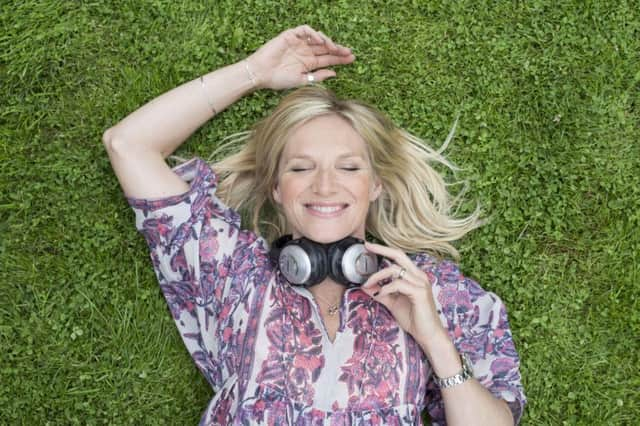Gardening: DJ Jo Whiley's musical garden


When Radio 2 presenter Jo Whiley switches off from her busy broadcasting career, she’s frequently found tuning in to music of a different kind.
“Music and gardening are my two big passions,” she explains. “When I’m gardening, I consciously switch off the radio and completely immerse myself in the sounds of the garden.
Advertisement
Hide AdAdvertisement
Hide Ad“Sound can have such a huge effect on people’s emotions. In the same way that someone may blast out a feel-good tune to lift their mood, the tranquil sounds of a garden can make you completely relaxed. Sound plays a big part of my life and my garden can provide a completely different musical backdrop compared to the studio.”
Whiley, 51, who lives in an 18th century barn conversion in a village in Northamptonshire with her music executive husband, Steve Morton, and four children, has transformed her garden into a musical paradise, featuring insect-friendly planting, wind chimes and water features.
“My garden sings with the sound of nature throughout the year. There are musical elements all around, from the bamboo wind chime to the trickling of the stream at the bottom of the main lawn.”
Whiley has now teamed up with experts from Wyevale Garden Centres (www.wyevalegardencentres.co.uk), offering tips to help gardeners recreate their own sounds of summer:
:: Create a buzz
Advertisement
Hide AdAdvertisement
Hide AdTo attract bees and other pollinating insects, mix up herbaceous perennials, annuals and biennials which flower at different times. Lavender, wild geranium and salvia, hollyhocks, foxgloves, daisy-like flowers including asters and heleniums will all be a magnet for bees. Choose single-flowered varieties of plants like nasturtiums. Bees and butterflies can’t access double flowers, which have layered petals or flowers within flowers (like some varieties of roses) for pollen and nectar.
:: Herb haven
Grow herbs like rosemary, which is attractive to bumble bees and solitary bees, while other herb garden favourites like lavender, sage, oregano and thyme all attract bees, butterflies and a host of other insects. If you leave some of your herbs to flower, you’ll also be providing a rich food source for these insects, leaving your garden buzzing with life and the hum of activity on warm days.
:: Tune into birdsong
Bear in mind that birds need four things - something to eat/drink, somewhere to shelter, somewhere to wash and somewhere to breed. Grass, trees, shrubs and water are essential. Hedges, bushes and shrubs are perfect hiding and perching places for birds and provide food like berries, fruit and insects for them to eat. Thoughtfully placed bird boxes make crucial spots for nesting.
Birds of all kinds are reliant on trees for food and shelter, and hanging a few bird feeders from the more sturdy branches creates additional resting places. Additionally, bird baths provide a watering hole and bathing point for smaller birds. Your lawn also has lots of different seeds that birds like, such as meadow grass, buttercup and dandelion.
:: Make a splash
Advertisement
Hide AdAdvertisement
Hide AdGarden ponds create ideal breeding conditions for frogs, newts, and toads and attract fascinating insects like the skater, water boatman and dragonflies.
Enjoy the gentle croak of the amphibians and listen to birds, insects and other animals.